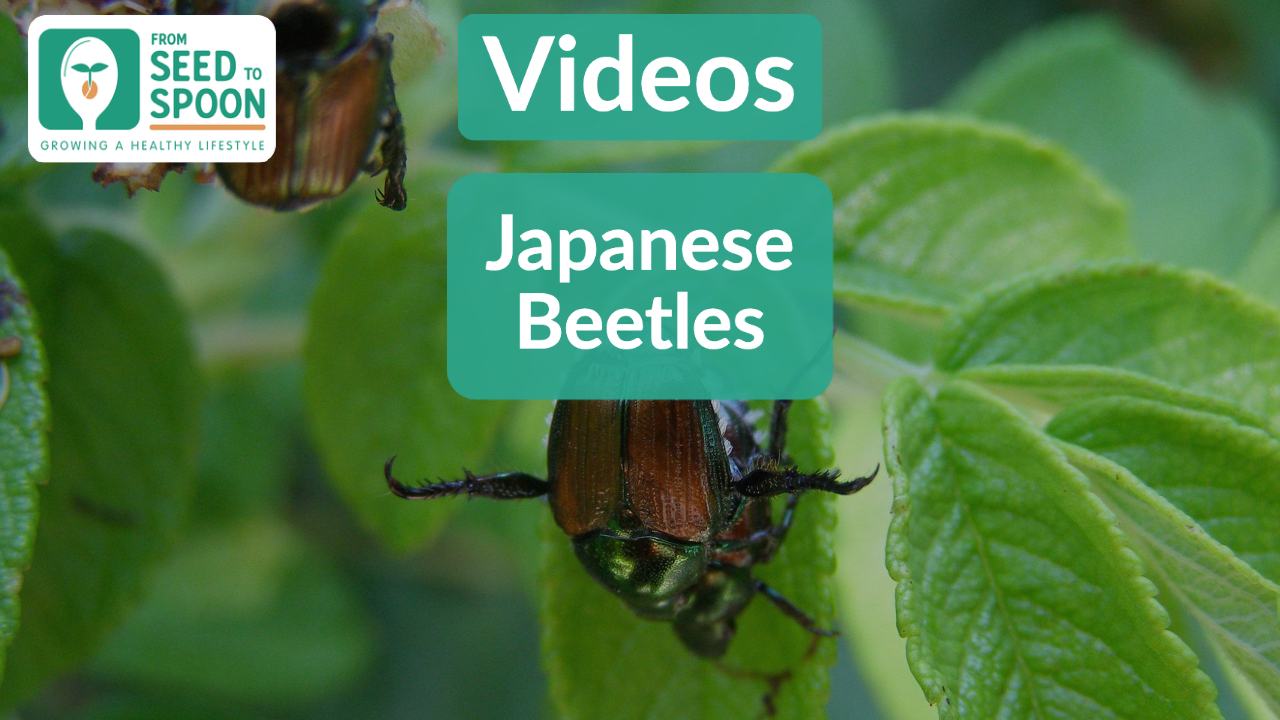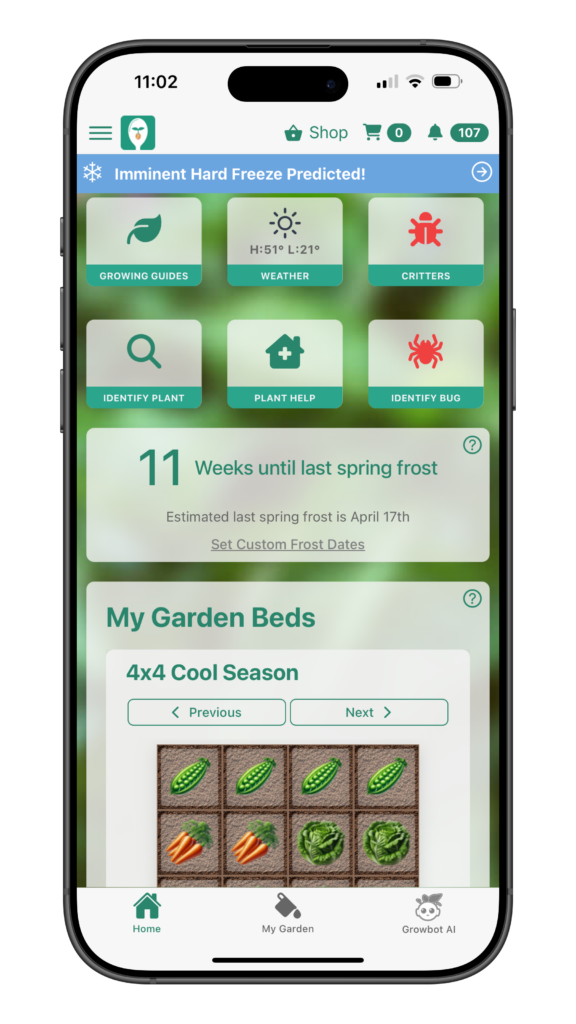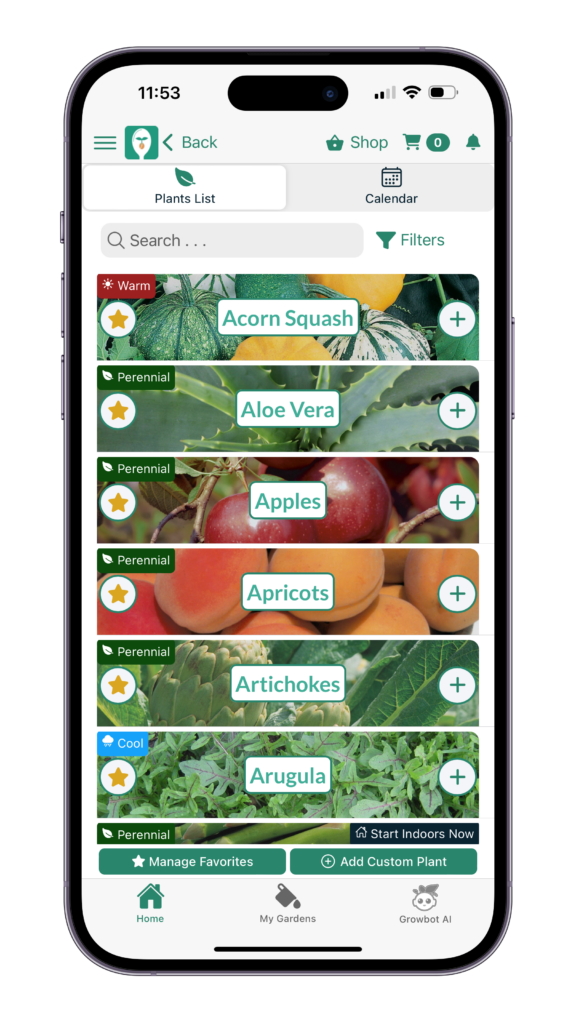Japanese Beetles, or more commonly known as June Bugs, have been menacing so many people’s gardens!
In this video, Carrie goes over many tips and tricks for managing Japanese Beetles organically.
Auto generated subtitles for video – text may be slightly off and grammar incorrect, but it’s better than nothing, right?! 🙂
Hey everybody. It’s Carrie with seed to spoon, we’ve been getting a lot of questions about Japanese beetles or junebugs and how to manage them. So I figured I would cover a few tips in this.
So Japanese beetles, which are also more commonly known as junebugs, or sometimes you will hear them referred to as grubs when they are in their larva state. And they’re just this little tiny, like white worm and those ones you’ll find. Deep within your soil. And those ones are a little bit easier to manage than your other ones.
And they pretty much will attack anything in everything, including your hair. It never fails. If you are out at night, like June bugs are just attracted to hair. I feel like there’s. Yeah, but they absolutely love things like rose plants, fruit bushes, Berry bushes, things like that. Those are their favorites, but pretty much any plant is at danger for.
Like with any pest prevention is always key. So you could use some companion planting to try and help some of your Mo more vulnerable plants. So the things that we talked about earlier, the roses, the Berry bushes, things like that, you can do companion planting. Things like herbs that are real strong smelling.
So things like catnip, chives, garlic, things like that to try and disguise those plants Bazell is another great companion plant. That’s really good for not just for Japanese meals, but for a lot of different things. So try some basil maybe, and also things like Marigold. Mr. Sheehan, those edible flowers are really good for that.
So once you have an issue, pretty much the most effective thing that you can do is to handpick. I know it sounds annoying, but that is going to be the best way to go about getting rid of them. Handpicking them, have a bucket of soapy water that you carry around. Dumped them immediately in that, and that will help to decrease their population.
And if you’re having issues on areas like your roses or your Berry plans, things like that, you could always try putting some sort of insect netting over top of them. While you go about trying to solve this Junebug. One of the biggest tips that I can give for Japanese beetles is by getting something called Milky spore.
So this is something that you can purchase. It’s actually going to be available in our app. And so check that out and it is absolutely amazing because you can lay it down in the ground typically in the fall time, and then it will get rid of the grubs whenever they’re in. Um, and so that way it comes spring, you won’t have an issue.
So make sure that you check out Milky spore and have that ready to go for your fall time. Something else that you could try is some diatomaceous earth as well. That will be for the soil. If you’re having issues with grubs. Some Japanese beetles in a certain spot, you could try putting down some diatomaceous earth in those areas.
And you could also try spraying some neem oil. If you’re having specific issues on certain plants. Now I will give a word of warning. If you are trying to use some neem oil in the summertime, it’s really important to make sure to pay attention to the weather, because if it gets too hot and you spray with neem oil, you can suffocate your plants and then you’ll have a dead plant.
And you want to make sure to stay away from that. So neem oil can only be used at the temperatures are below 90 degrees Fahrenheit. So make sure to pay attention to that. And we pretty much, anytime it hits summertime, we completely avoid using the Moyle here in our area because our temperatures get above that all the time, but there’s really it’s unpredictable.
So we try to just rather be safe than sorry. Well, I hope that this video helps you give you some ideas of ways to go about handling Japanese beetles. Make sure if you don’t already check out our free app from seed to spoon, there is a pest section in there that goes through all of the different treatments that I talked about today.
Maybe some others too but it’ll talk all about organic methods, ways that we go about handling these. pests in our garden. So make sure you check that out and thank you so much for watching everybody. If you have any questions, please feel free to leave them in the comment section and I will get back with you.
See y’all later. Bye.
Learn more about growing over 100 different foods, including how to manage various pests in our FREE iOS, Android, or new Universal Web App!

Carrie Spoonemore, co-founder of “From Seed to Spoon,” stands as a beacon of inspiration for gardeners and health enthusiasts alike. Her journey alongside her husband, Dale Spoonemore, in creating a platform that demystifies gardening and promotes a healthier lifestyle, has made a significant impact on individuals around the globe. Through the “From Seed to Spoon” app, Carrie has dedicated herself to empowering people to take control of their health and environment by growing their own food.
With a profound belief in the power of gardening to improve mental and physical health, Carrie’s contributions to the Seed to Spoon blog reflect her holistic approach to wellness. Her articles often focus on the nutritional benefits of homegrown fruits and vegetables, organic gardening practices, and the mental health benefits of spending time in nature. Carrie’s expertise in health science shines through in her detailed discussions on how specific plants can contribute to a balanced diet and overall well-being.
Carrie’s passion for gardening is deeply intertwined with her commitment to family and community wellness. She frequently shares personal stories of how gardening has brought her family closer together, offering practical tips for involving children in gardening activities and making it a fun, educational experience. Her writing encourages families to explore gardening as a means of spending quality time together while learning about nature and sustainability.
In addition to gardening advice, Carrie’s contributions to the blog include insights into the use of technology to enhance the gardening experience. She has played a crucial role in designing the “From Seed to Spoon” app to be user-friendly, ensuring that users of all ages and backgrounds can navigate the complexities of gardening with ease. Her vision for the app is not just as a gardening tool but as a vehicle for change, inspiring individuals to adopt a more sustainable lifestyle by growing their own food.
Carrie Spoonemore’s presence on the blog is marked by her compassionate approach to teaching and her unwavering belief in the transformative power of gardening. Her work continues to inspire a community of gardeners to pursue a healthier, more sustainable way of living, proving that with the right tools and knowledge, anyone can become a gardener and advocate for their health and the planet.











One thought on “Japanese Beetles: Tips & Tricks to Managing These Garden Pests Organically!”
I’m looking for gourd seeds